10 Home Decorating Hacks and Rules for Curating Beautiful Vignettes
Vignettes don't have to be surface level.
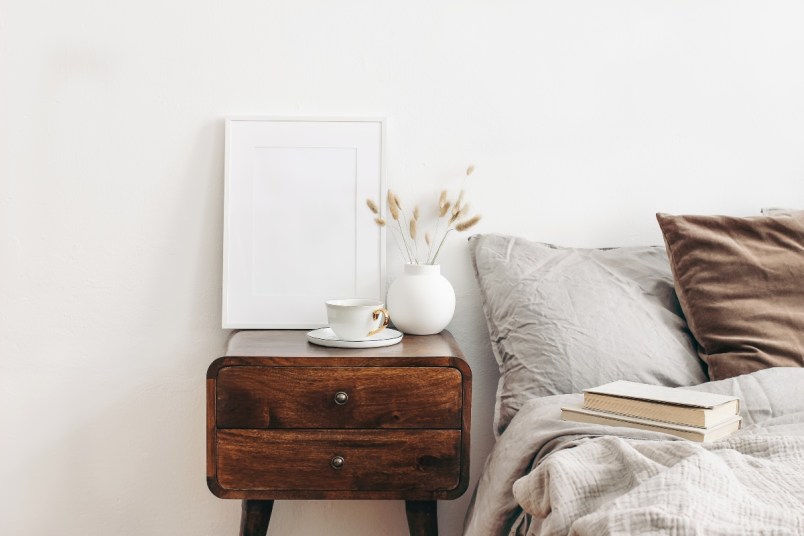
Let’s start here: What on earth is a “vignette?” Simply put, vignettes are the artfully curated display of items fit to a theme or design concept. These items can include everything from flowerpots and vases, to books, candles, and trinkets. The only rule is arranging them into an aesthetically pleasing cluster. Typically, vignettes appear on dining room sideboards, nightstands, fireplace mantels, shelves, and entry consoles. They’re the little design touches that personalize a space.
Most vignettes have a focal point and rely on staggered heights, and a variety of shapes, sizes, textures and materials. While the placement of objects is strategic, many vignettes are meant to elicit an “effortless” look.
Not sure how to make a vignette? Here are a few decorating tips and home decor hacks for creating a gorgeously curated space.
1. Symmetry starts with a centerpiece.
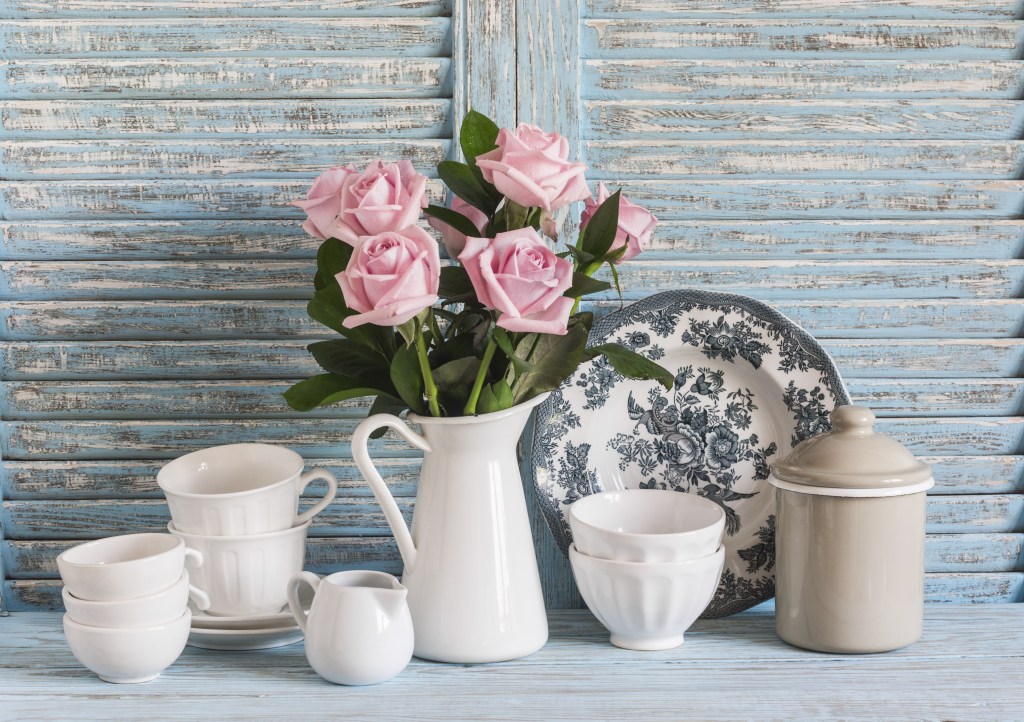
A prominent center object acts as a focal point. This might come in the form of a towering bouquet of flowers in between a set of teacups. On a mantel or buffet, two pieces that have a shorter stature, like a pair of vases or lamps, balance the ends as you fill in the middle. Symmetry establishes order and calm. In a vignette, this visual uniformity suggests organization, even if the space is crowded.
2. Adhere to the rule of three (and five).
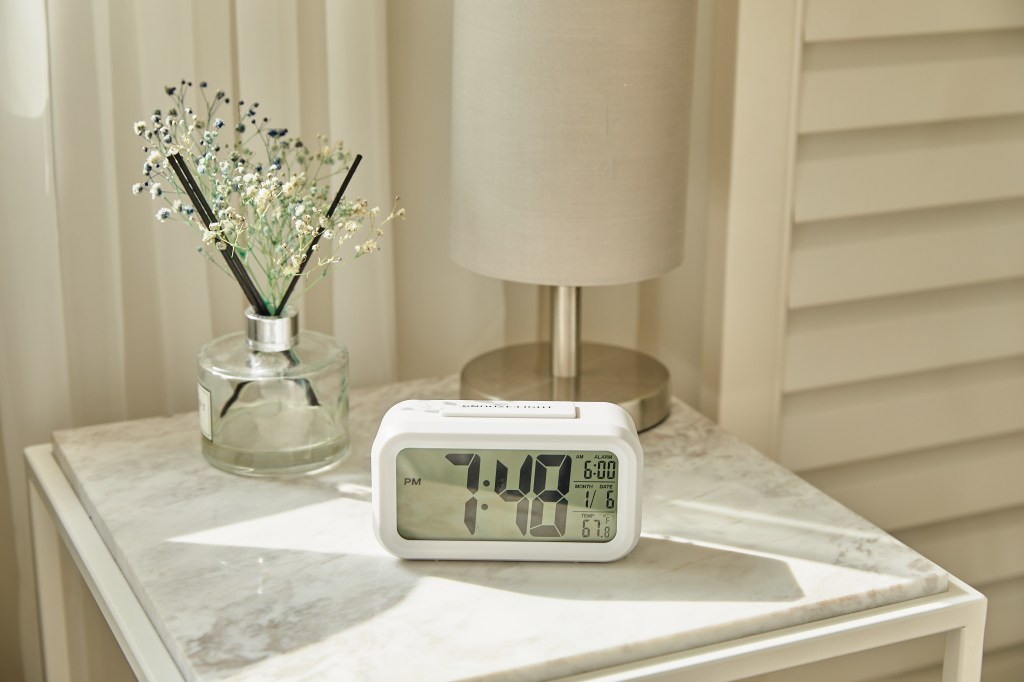
The rule of three is a golden rule of vignettes. Here, items on display are grouped in three (or five) and arranged in staggering heights. The designer must establish the vibe: Is it sharp symmetry and minimalism? Or a softer setup with objects of different shapes and sizes?
3. Go big or go home.
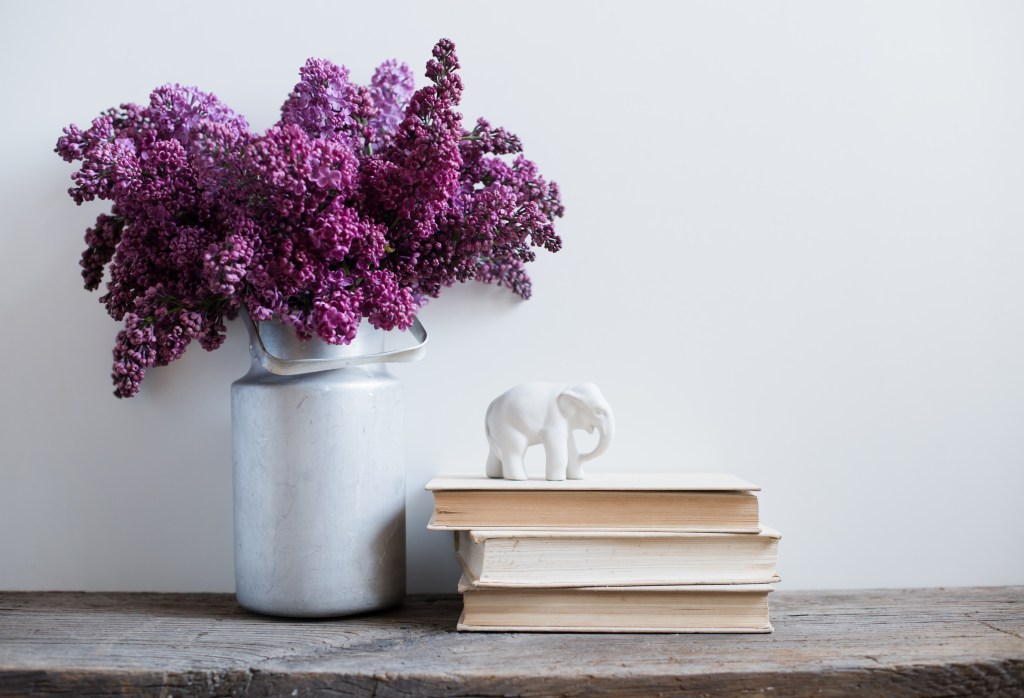
When it comes to vignettes, larger items act as the design’s anchor, and are therefore set up first. They help to fill out the vertical space, and provide a focal point for the vignette’s story. A large plant, lamp, or even a stack of books works well. Additionally, if the space you’re working with is on the smaller side, taking advantage of vertical space allows you to create a fuller, more complete looking vignette.
4. Envision a triangle.
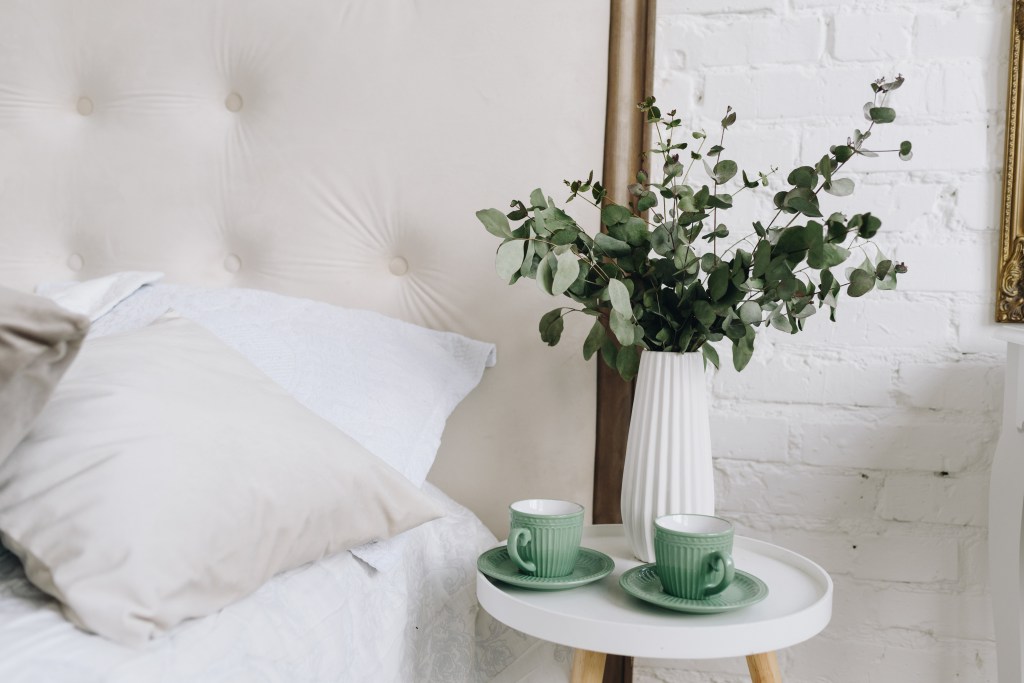
Because our eyes scan from left to right, place your tallest item on the upper left, then stagger
items downward by height. Another option is pairing a long, low object on the right, then adding items to connect them to the larger vignette. In a group of three, use a tall item in back; a shorter, heavier item on the left; and something small, light, and sculptural on the right front. (It’s easier than it sounds!)
5. Pair a mom and baby.
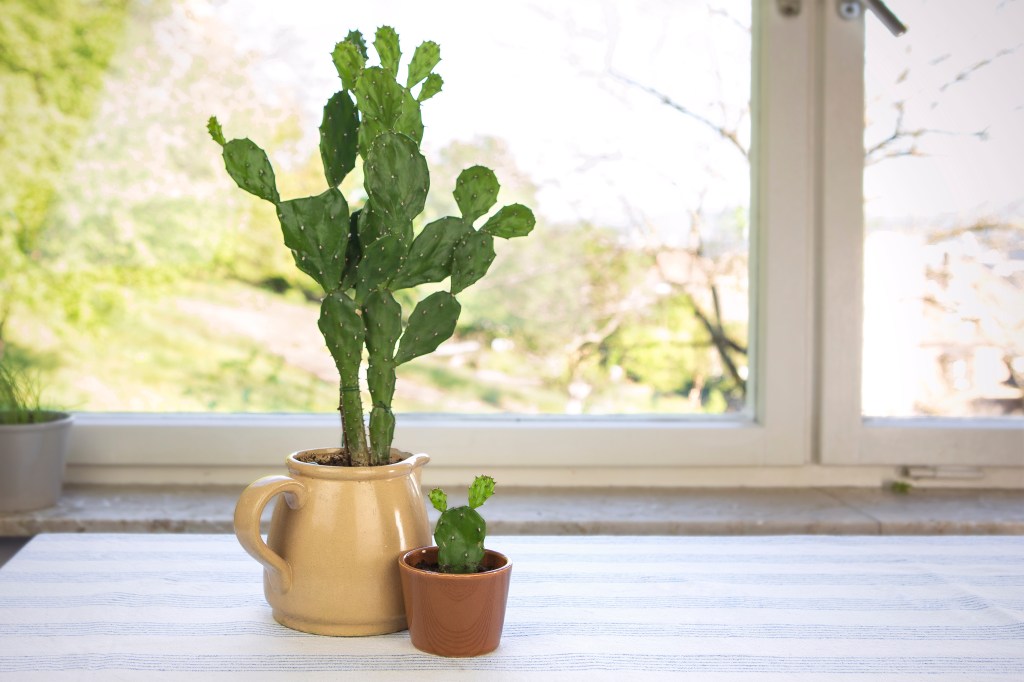
They say good things come in small packages. Forgo the “threes and fives” rule and match two similar objects in a “mom-and-baby” scale — one large item, with its small counterpart. It’s not only aesthetically pleasing, but totally adorable.
6. Go monochromatic.
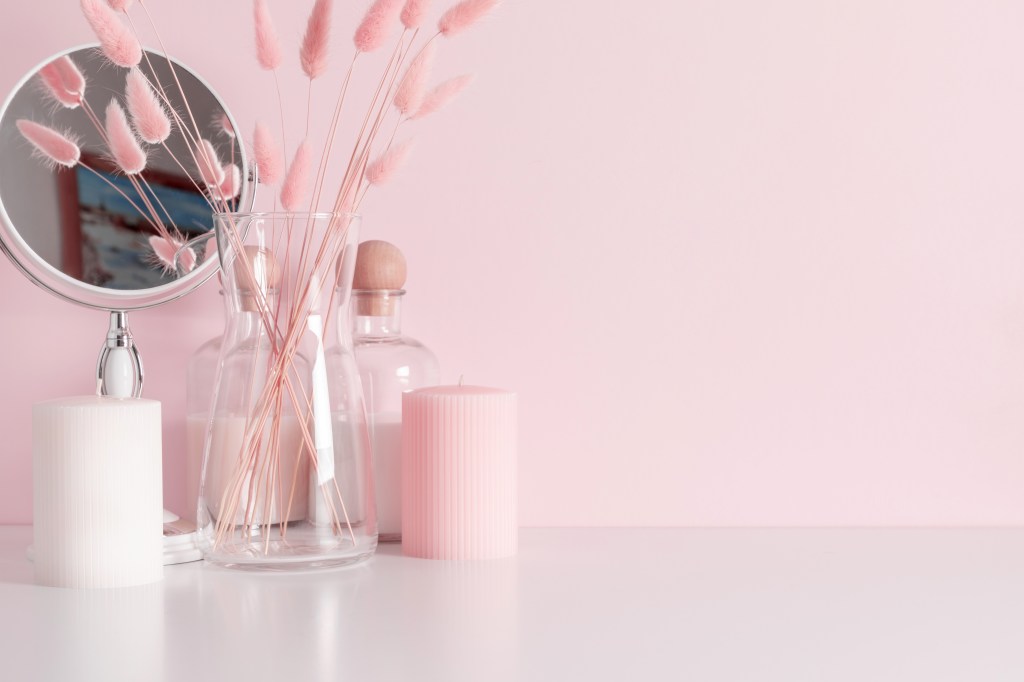
Milk glass, ironstone, jadeite, and pink depression glass all work for creating single-color
displays with a high drama factor. Going for a dark, modern look? Choose ashy grays and blacks. Creating a nautical theme? Shades of sea green and navy blue evoke the ocean. Pick a color that complements your space, or any hue that makes your heart happy.
7. Work in layers.
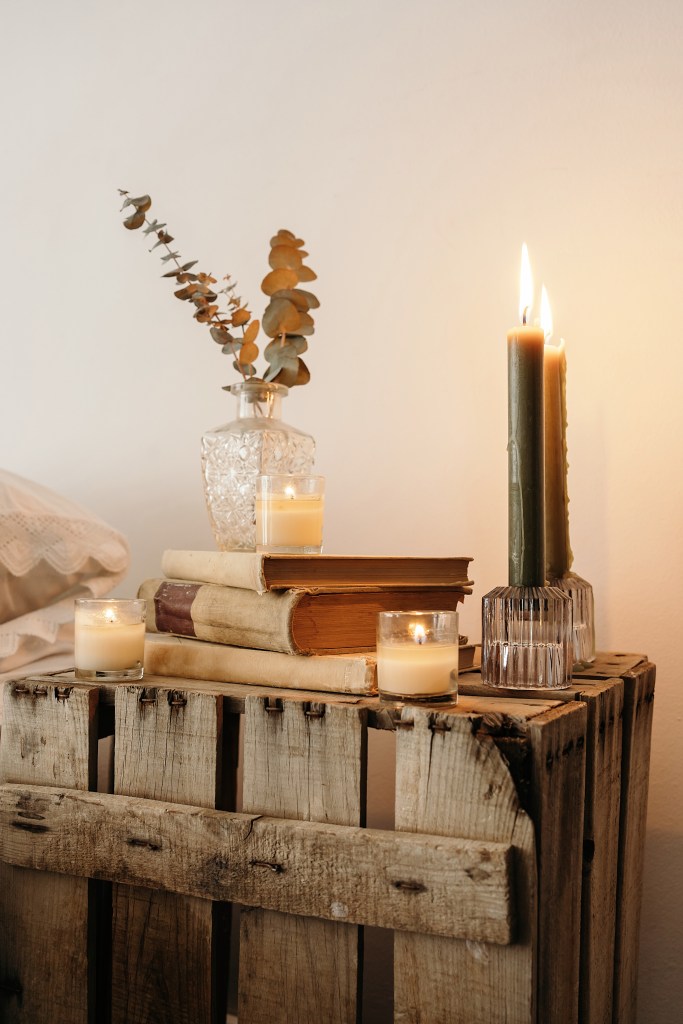
Just like your grade school class photos, tall stands in back, shorter in front. Working from back to front, or even front to back to build the depth you desire, play with frames, mirrors, and trays. You can also layer bottom to top, stacking items in varying heights. Remember, vertical space is just as valuable as horizontal space!
8. Build from a base.
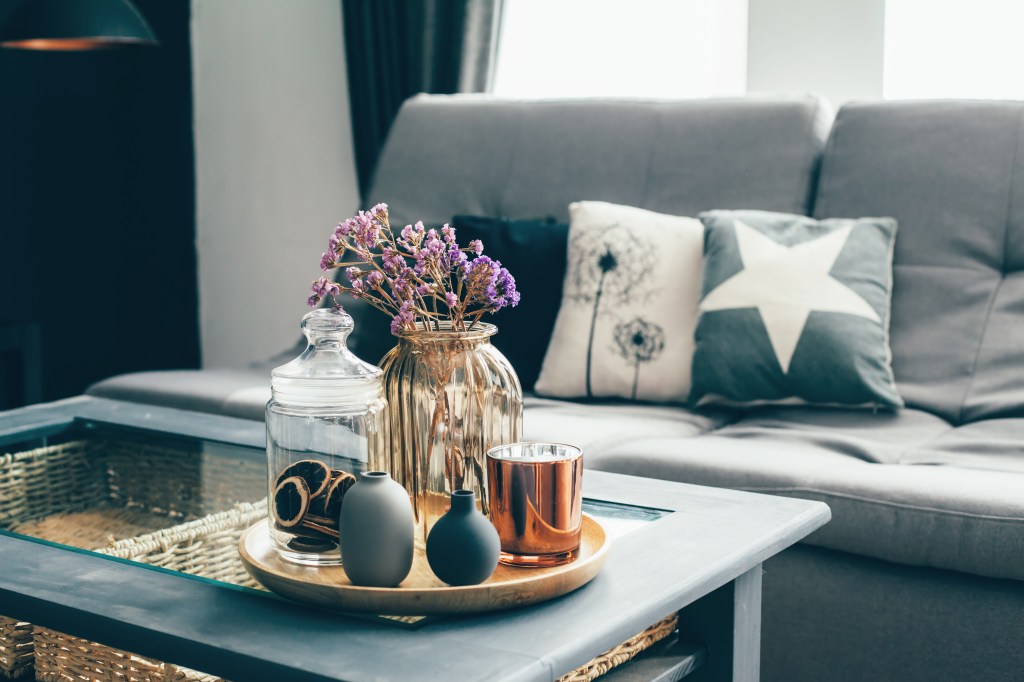
Try a tray, scale, shallow basket, table runner, box, cutting board, or books as a foundation piece. Building vignettes on these “platforms” adds visual interest and imbues your space with sculptural elements. If you’ve just started playing around with creating the perfect vignette, working with a tray or basket is a good way to maintain order and organization, at least while figuring out the styles and arrangements you prefer.
9. Mix materials, shapes, and sizes for contrast and texture.
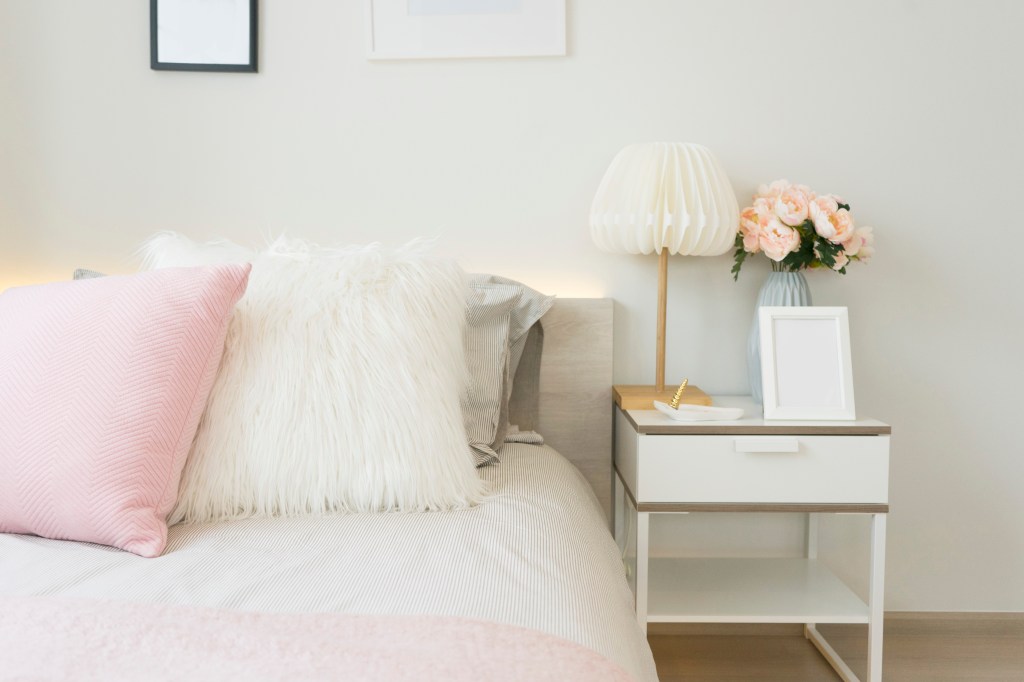
The ultimate display blends shiny, matte, soft, hard, glass, wood, metal, paper, fabric, stone, and something living. Overwhelmed? Start with a simple contrast of clean white pieces and add sterling silver and/or wood. Mixing materials not only adds depth and texture. You’d be surprised by the combos that work well together. Fresh, bright greenery serves as a gorgeous contrast to weathered, dark wood pieces. If you prefer a less dramatic contrast, mixing materials while staying in a similar color scheme is a good solution.
10. Consider a twist.
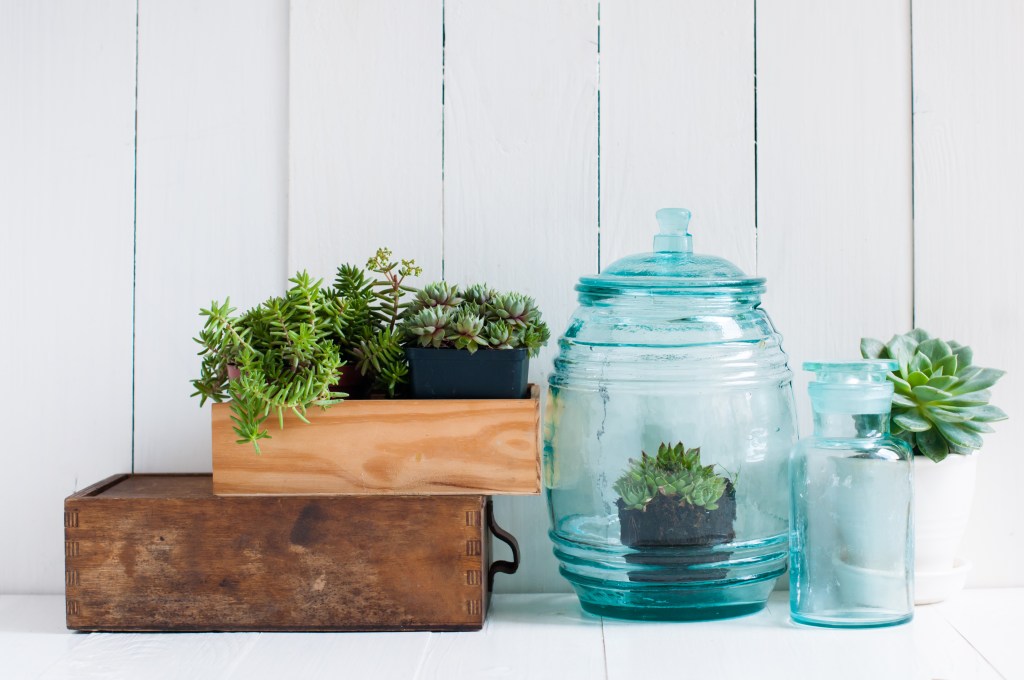
From a succulent under a glass cloche to a whimsical figurine or stack of books with pages facing the front, your imagination sets your vignettes apart. Creating the perfect vignette comes with a lot of trial and error. If you find yourself moving and rearranging a hundred times, you’re on the right track. For inspiration, try out sites like Pinterest to get some ideas on how to amp up your surface!












